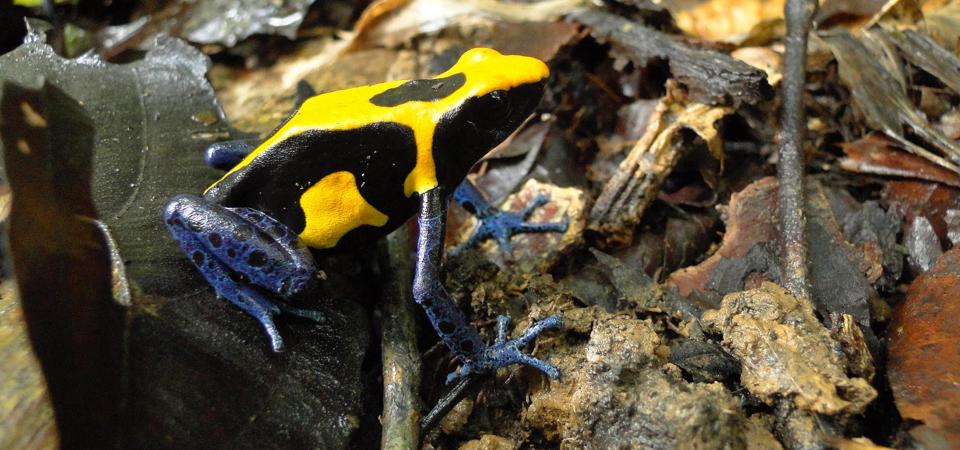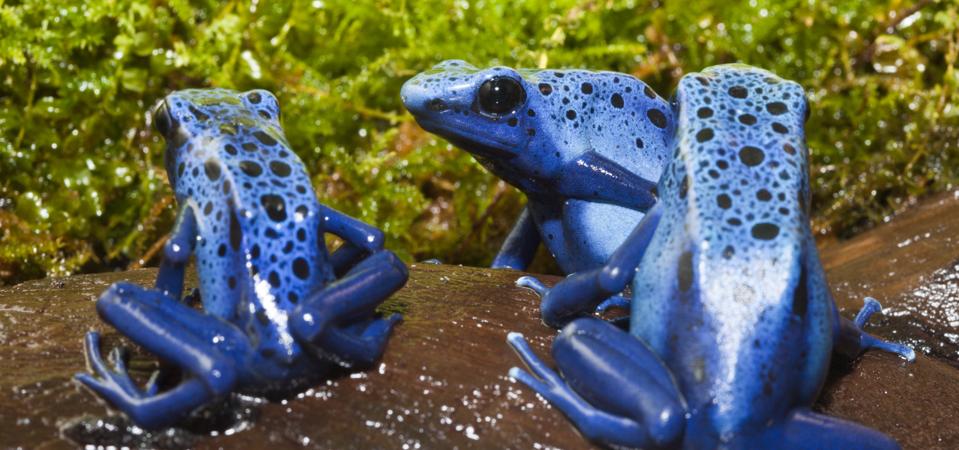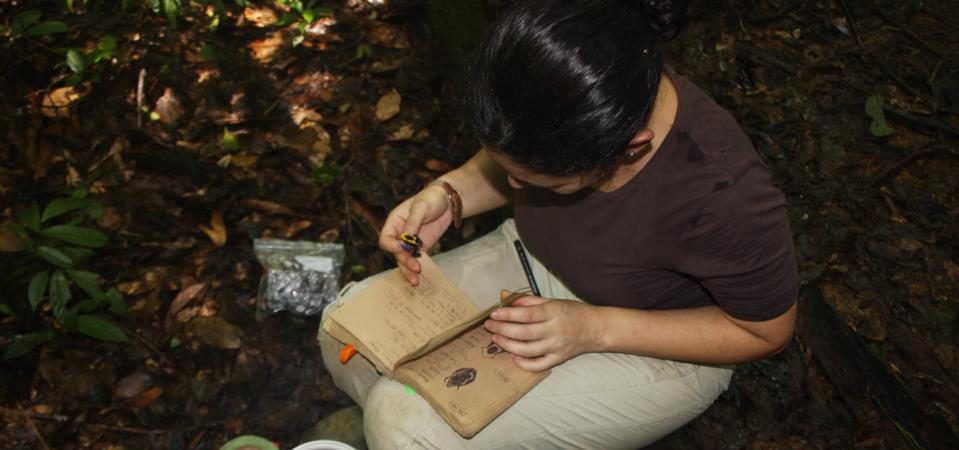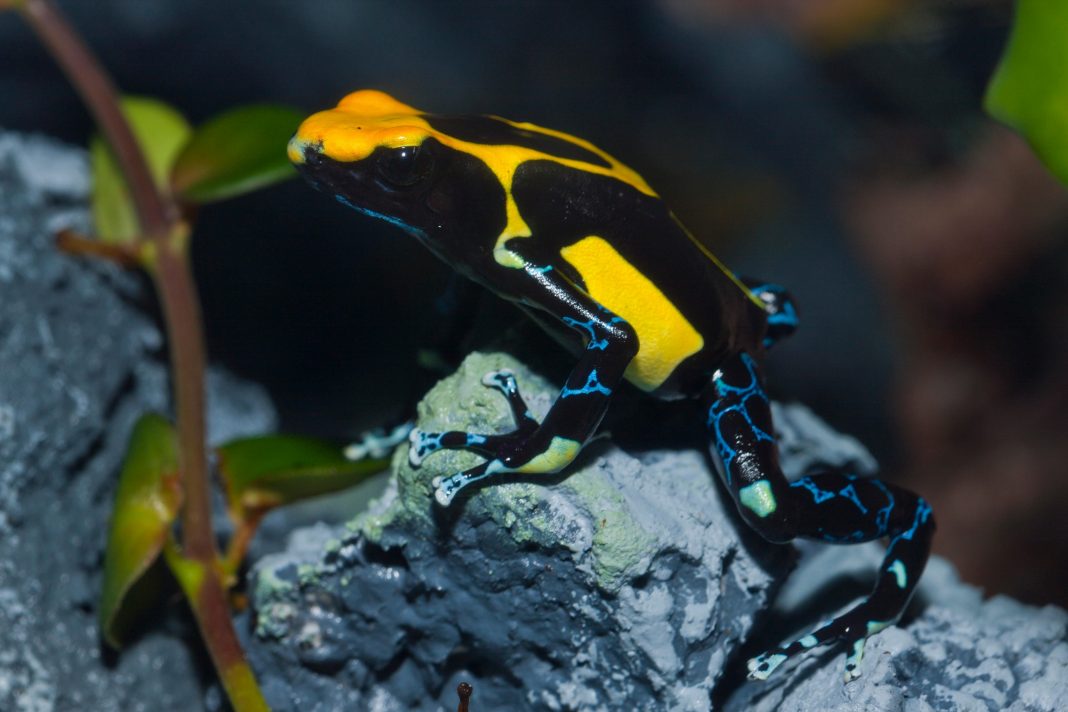
The poison frog studied by Colombian researcher Bibiana Rojas.
Bibiana Rojas.
Colombian researcher Bibiana Rojas says her life changed forever when she got to meet a poison frog in real life – now she studies a range of brightly colored frogs and moths and how they interact with predators.
Rojas, who is from Bogota, Colombia and is now an Academy of Finland Research Fellow at the University of Jyväskyläin in central Finland says she started getting interested in frogs in university.
“My life changed the day I saw a poison frog in real life,” she said, “A batch of about 400 poison frogs illegally caught in the Pacific region of Colombia were confiscated by the environmental authorities at El Dorado airport in Bogota.”
She says poison dart frogs, the common name of a group of frogs in the family Dendrobatidae which are native to tropical Central and South America, are unfortunately in high demand in the pet trade, where they can be sold for hundreds of dollars, especially if they come in a color variety that hobbyists have never seen or bred.
“The laboratory where I was doing my Bachelor’s thesis was given 80 of these frogs and I did a small project on how they settle their fights and solve their conflicts, she said.
Rojas says she eventually ended up doing field work in Les Nouragues natural reserve in French Guiana to record one of the most charismatic poison frogs, the dyeing poison frog (Dendrobates tinctorius).

(GERMANY OUT) Blue Poison Dart Frog, Dendrobates tinctorius azureus, Suriname (Photo by Reinhard … [+]
ullstein bild via Getty Images
“Off I went to the rain-forest, to record the calls and document the colors of those frogs, only to learn that, unlike all other poison frogs I know, they do not call!” she said, adding that they do sometimes, but not in the predictable, regular way other poison frogs do.
“When they call they do it so softly that it can be very hard to hear them!” she said, adding this led her to pivot to studying their colors in the context of defenses against predators.
“Some animals use camouflage, for example, to avoid being detected or recognized by their predators, but some others, use very vivid colors that predators can easily find and recognize,” she said. “These colors inform the predators that these prey are not something they would like to eat, as these prey are commonly defended through spines, irritant hairs, a disgusting taste or even powerful toxins.”
Rojas says predators learn the association between those colors and a bad experience, and thus avoid these prey in future encounters, but given how many colors and patterns there are, it has been long thought that this variation would confuse predators.
“I have been using a combination of experiments in the field in the lab, as well as exhaustive field observations, to understand how brightly colored and distasteful animals can come on many colors despite the presumed disadvantages,” she said.
The way that the Rojas research group does that sounds deceptively simple: Ask the predators themselves.
“We use relevant predators to “ask them” what they think about the chemical defenses of these moths and frogs,” she said, “To do that, I worked on developing a method that allowed to make wild-caught birds taste the chemical defensive fluids of these moths and frogs, in a way that we could quantify how distasteful they are.”
Rojas says that by using this method, they have found, for example, that something that tastes really bad is not necessarily toxic, and vice versa!

2020-06-poison-frogs-bibiana
Bibiana Rojas
“Beyond the work with the frogs themselves, the most important aspect of my connection with the Global South is the opportunity to help train and mentor students from the region to do excellent science and expand their horizons in terms of what they can achieve,” Rojas said.
Rojas says she believes she has been privileged with the education she’s received and the opportunities she’s had, and now it is her time to “pay it forward”.
“I enjoy co-supervising or mentoring South American students, particularly those who come from small universities or universities in cities other than the capitals,” she said, “Contributing to their education and giving them access to people and opportunities that can bring their careers further is, to me, much more rewarding than any specific piece of ‘frog knowledge’ that I can pass on to them.”
Other Educators in Colombia are making sure that the next generation of scientists will follow in the footsteps of Rojas.
Edna Matta-Camacho, a biochemist now based at Canada’s Carleton University, has been working with her brother and sister-in-law to provide better opportunities for student, especially girls, in Tolima department (state), located in the heart of Colombia.
Matta-Camacho says their passion to spark the curiosity in their students and to provide students with opportunities for a better future in science technology engineering and mathematics (STEM), inspired her to create STEM sin Fronteras (STEM without borders).









